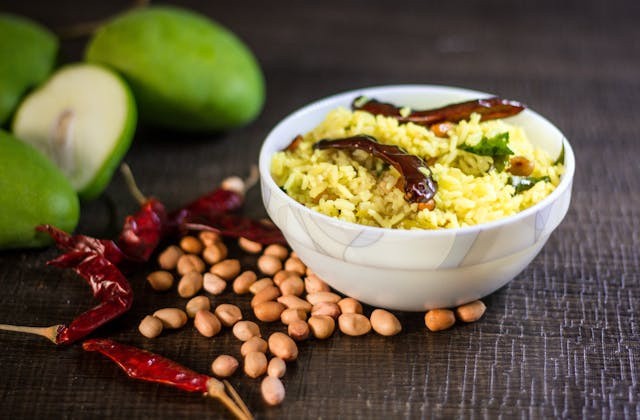
A new "meat rice" has been produced, and those behind it plan to commercialize it. The "beef rice" product offers the same benefits as regular beef but is much cheaper.
Beef Rice: The Lab-Grown Meat-Rice Hybrid
In a new study, Korean scientists detailed that the alternative protein source has a much smaller carbon footprint than meat, costing a fraction of regular beef. The new product is called "beef rice."
The scientists cultured animal muscle and fat cells inside rice grains to produce the food. The researchers established a cellular environment inside the rice grains using biological scaffolds.
Because rice grains have pores, the cells have several spaces to reside. These animal cells can proliferate with the help of chemicals found in the grain.
In order to facilitate the cells' attachment to the rice, fish gelatin was used to encircle the grain in the hybrid dish. After injecting the rice with cow muscle and fat stem cells, they let it grow for nine to 11 days.
The researchers noted that the final "beef rice" product has a low carbon footprint and minimal chance of triggering food allergies. The carbon dioxide released by this beef rice is less than 6.27 kg. By contrast, 49.89 kg are released by beef.
In addition, this hybrid cuisine may be far less expensive than traditional beef. This rice would cost approximately $2.23 per kilogram, whereas beef can cost as much as $14.88.
"We usually obtain the protein we need from livestock, but livestock production consumes a lot of resources and water and releases a lot of greenhouse gas," said first author Sohyeon Park, who conducted the study alongside corresponding author Jinkee Hong at Yonsei University, South Korea.
"I didn't expect the cells to grow so well in the rice. Now I see a world of possibilities for this grain-based hybrid food. It could one day serve as food relief for famine, military ration, or even space food."
Park added that rice is rich in nutrient levels, and counting livestock cells boosts it. Thus, we can obtain all the nutrients in a cell-cultured protein rice.
However, more work must be done before this product can be widely adopted as a healthy protein substitute. To enable the animal cells to flourish and proliferate, the researchers must create more favorable growing conditions for the rice.
According to the study, the nutritional benefits may rise if the cells are flourishing in a favorable environment. These foods created in laboratories might grow in popularity as long as agriculture has difficulties on a global scale.
Because there are generally few safety concerns and a straightforward production procedure, the scientists are upbeat about the product's prospects for commercialization.
Woolly Mammoth Burgers
In related news, Paleo, a Belgian firm producing synthetic proteins for the artificial meat market, planned to create woolly mammoth burgers. The company's CEO, Hermes Sanctorum, is driven to expand the business to develop woolly mammoth burgers, partly because of his "childhood fascination with prehistory."
Working with the Centre for Palaeogenetics in Sweden, the business has obtained DNA pieces from mammoth teeth found in the Siberian tundra that date back up to 1.2 million years. The company wants to replicate the mammoth variant of the gene that codes for the protein myoglobin, which gives meat its deep red color and flavor. The DNA from Asian and African elephants, the mammoth's closest living cousins, was combined with these fragments.
That gene was inserted into the DNA of yeast, and the organism soon began to produce mammoth myoglobin. Binders such as potato starch, oil, salt, and other seasonings were incorporated to give the protein a burger-like flavor and consistency.
According to Paleo's patent, the myoglobin in the burger causes several chemical reactions that give the burger its distinct flavors. Sanctorum asserts that the flavor of mammoth burgers is "more intense" than beef's.
RELATED ARTICLE : Crocodile-Like Beast That Roamed In Tanzania 240 Million Years Ago Discovered, Gets New Name
Check out more news and information on Tech & Innovation in Science Times.











